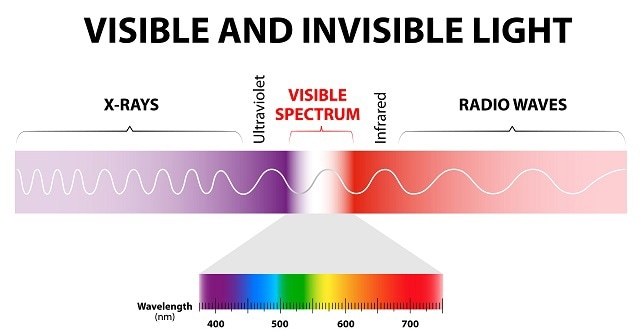Sep 5 2014

Image Credits: shutterstock.com
Ultraviolet (UV) light is a portion of the electromagnetic spectrum between visible rays and X-rays. It lies in the frequency range of 10 to 400 nm with photon energies from 3 to 124 eV. UV light was first discovered by the German physicist Johann Wilhelm Ritter in 1801 when he exposed silver salts to sunlight. Following this, another German physicist Victor Schumann discovered vacuum ultraviolet, the ultraviolet radiation below 200 nm in 1893.
In general, a large amount of UV light including the UV rays that hit the Earth’s surface is considered as non-ionizing. However, the high-energy UV spectrum in the range of 10 to 120 nm are said to be ionizing. UV radiation causes damage to the biological systems by altering the chemical bonds of the molecules.
Sources of Ultraviolet Light
Sun is the major source of UV light at all wavelengths. Other artificial sources of UV light include:
- Black light
- Short wave UV light
- Gas-discharge lamps
- Germicidal lamps
- Fluorescent and incandescent sources
- UV LEDs
- UV lasers
Classification of Ultraviolet Light
UV light can be sub-divided into three different types – UV-A, UV-B and UV-C based on the amount of energy they contain.
- UV-A rays – These rays do not have sufficient energy to break up the bonds of ozone. Hence, this radiation remains unfiltered and passes through the atmosphere of Earth. It is less harmful.
- UV-B rays – These rays have a lower energy level and a longer wavelength when compared to that of UV-C.
- UV-C rays – These rays have a higher energy level, and are harmful. When UV-C rays come in contact with the ozone molecules in the atmosphere, the energy inherent in them is enough to break the bonds of the molecules and absorb the energy. Hence, they do not enter the Earth’s surface.
Detection and Measurement of Ultraviolet Light
UV light can be detected using suitable photocathodes, photodiodes and sensitive photomultipliers. Near and medium UV light can be detected using photographic films. Wide-gap solid-state devices or vacuum devices having high-cutoff photocathodes can be used for detecting vacuum UV.
The following are the three key parameters required for UV measurements:
- Wavelength – Measurement of individual wavelengths of a UV source requires a sophisticated device known as a spectrometer or spectral radiometer. Spectral radiometers can measure individual peaks of the UV spectrum.
- UV irradiance - Irradiance provides the required energy to penetrate the thicker coating films to achieve proper curing.
- UV energy density – The energy density can be estimated if the irradiance and time of exposure are known.
Applications of Ultraviolet Light
UV light is applied in the following:
- UV curing lamps
- UV-A black light fluorescent inspection
- Imaging applications
- Analysis of minerals
- Forensic applications
- Fire detection
- Biological applications including food processing, photochemotherapy and microbial sterilization
Sources and Further Reading